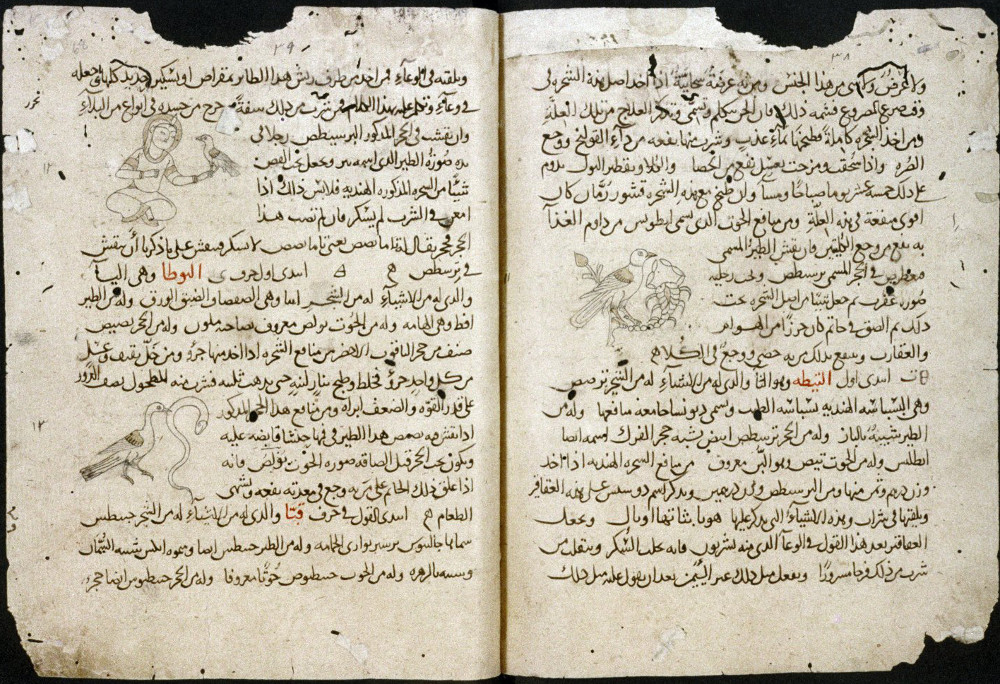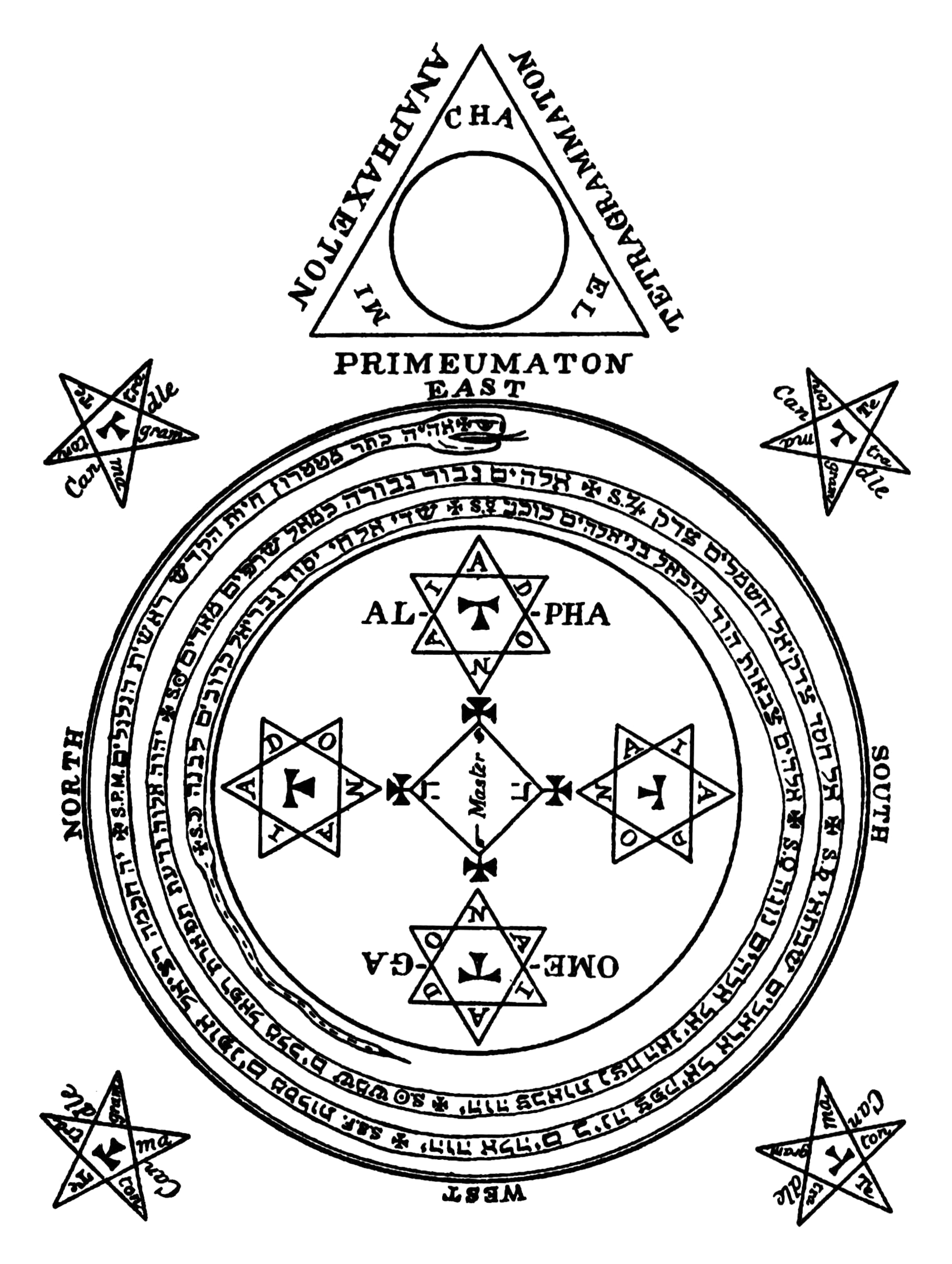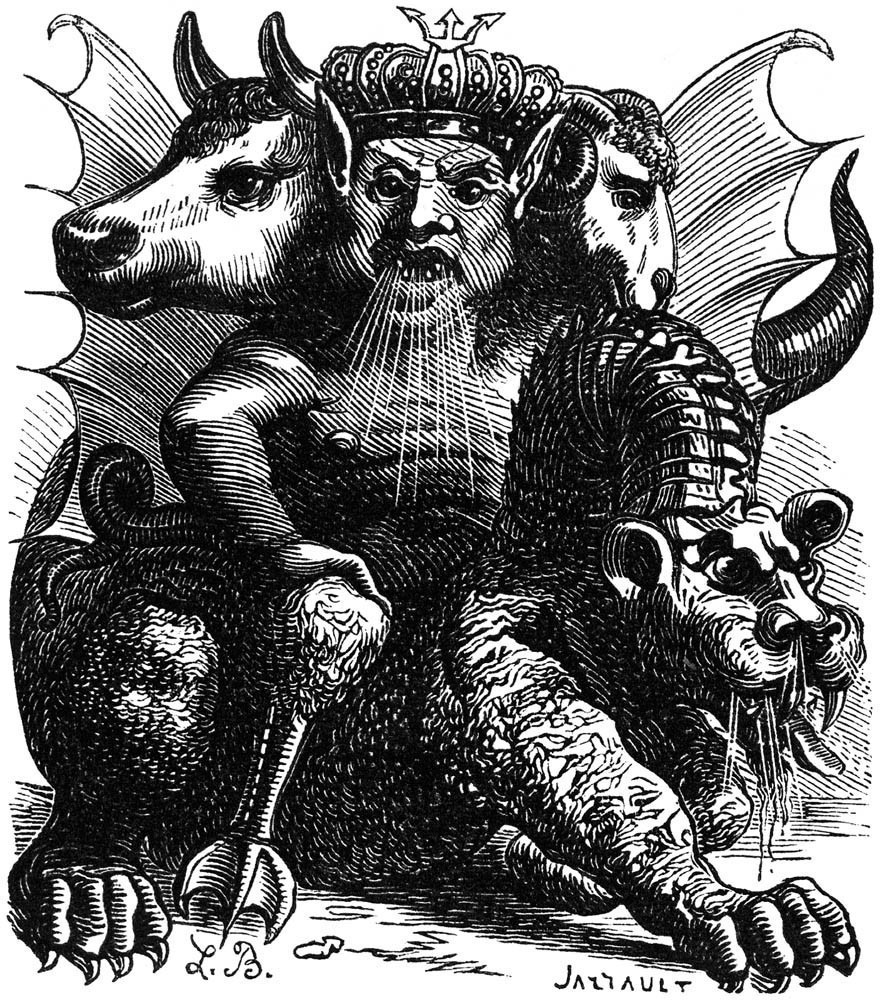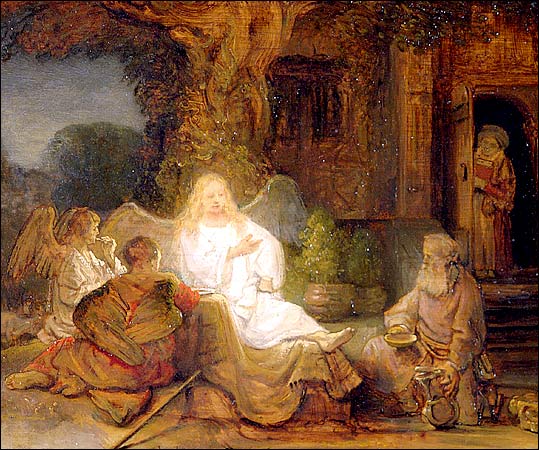|
Magical Treatise Of Solomon
The ''Magical Treatise of Solomon'', sometimes known as ''Hygromanteia'' ( grc-gre, Ὑγρομαντεία) or ''Hygromancy of Solomon'', the ''Solomonikê''Rankine, pp. 98–100 in Lycourinos. (Σολομωνική), or even ''Little Key of the Whole Art of Hygromancy, Found by Several Craftsmen and by the Holy Prophet Solomon'', refers to a group of similar late Byzantine-era grimoires purporting to contain Solomon's instructions to his son Rehoboam on various magical techniques and tools to summon and control different spirits, those spirits' powers, astrological beliefs, select charms, different means of divination, and the magical uses of herbs. History and influence The oldest manuscripts are from the fourteenth century, and the majority from the fifteenth century, but Pablo A. Torijano's claim that it is based on material going as far back as the sixth century is either accepted or at least regarded as plausible. Ioannis Marathakis, while not denying the possibility of ... [...More Info...] [...Related Items...] OR: [Wikipedia] [Google] [Baidu] |
Byzantine
The Byzantine Empire, also referred to as the Eastern Roman Empire or Byzantium, was the continuation of the Roman Empire primarily in its eastern provinces during Late Antiquity and the Middle Ages, when its capital city was Constantinople. It survived the fragmentation and fall of the Western Roman Empire in the 5th century AD and continued to exist for an additional thousand years until the fall of Constantinople to the Ottoman Empire in 1453. During most of its existence, the empire remained the most powerful economic, cultural, and military force in Europe. The terms "Byzantine Empire" and "Eastern Roman Empire" were coined after the end of the realm; its citizens continued to refer to their empire as the Roman Empire, and to themselves as Romans—a term which Greeks continued to use for themselves into Ottoman times. Although the Roman state continued and its traditions were maintained, modern historians prefer to differentiate the Byzantine Empire from Ancient Rome a ... [...More Info...] [...Related Items...] OR: [Wikipedia] [Google] [Baidu] |
Cyranides
The ''Cyranides'' (also ''Kyranides'' or ''Kiranides'') is a compilation of magico-medical works in Greek first put together in the 4th century. Latin and Arabic translations also exists. It has been described as a " farrago" and a ''texte vivant'', owing to the complexities of its transmission: it has been abridged, rearranged, and supplemented. The resulting compilation covers the magical properties and practical uses of gemstones, plants, and animals, and is a virtual encyclopedia of amulets; it also contains material pertinent to the history of western alchemy, and to New Testament studies, particularly in illuminating meanings of words and magico-religious practices. As a medical text, the ''Cyranides'' was held in relatively low esteem even in antiquity and the Middle Ages because of its use of vernacular language and reliance on lore rather than Hippocratic or Galenic medical theory. In the ''Pseudodoxia Epidemica'', Thomas Browne described the ''Cyranides'' as "a collec ... [...More Info...] [...Related Items...] OR: [Wikipedia] [Google] [Baidu] |
Goetia
''The Lesser Key of Solomon'', also known as ''Lemegeton Clavicula Salomonis'' or simply ''Lemegeton'', is an anonymous grimoire on demonology. It was compiled in the mid-17th century, mostly from materials a couple of centuries older.''Lemegeton Clavicula Salomonis: The Lesser Key of Solomon, Detailing the Ceremonial Art of Commanding Spirits Both Good and Evil''; ed. Joseph H. Peterson; Weiser Books Maine; 2001. pp. xi–xvii.''The Goetia of Dr Rudd''; Thomas Rudd, Eds. Stephen Skinner & David Rankine; 2007, Golden Hoard Press. p. 399. It is divided into five books—the ''Ars Goetia'', ''Ars Theurgia-Goetia'', ''Ars Paulina'', ''Ars Almadel'', and ''Ars Notoria''. ''Ars Goetia'' Etymology The text is more properly called "Lemegeton Clavicula Salomonis, or, The little Key of Solomon". The title most commonly used, "The Lesser Key of Solomon," does not in fact occur in the manuscripts. A.E. Waite, in his 1898 ''Book of Black Magic and of Pacts'' does use the ter ... [...More Info...] [...Related Items...] OR: [Wikipedia] [Google] [Baidu] |
Byzantine Literature
Byzantine literature is the Greek literature of the Middle Ages, whether written in the territory of the Byzantine Empire or outside its borders.Encyclopædia Britannica - "Greek literature: Byzantine literature" It forms the second period in the history of Greek literature after Ancient Greek literature. Characteristics Many of the classical Greek genres, such as drama and choral lyric poetry, had been obsolete by late antiquity, and all medieval literature in the Greek language was written in an archaizing style, which imitated the writers of ancient Greece. This practice was perpetuated by a long-established system of Greek education where rhetoric was a leading subject. A typical product of this Byzantine education was the Greek Church Fathers, who shared the literary values of their pagan contemporaries. Consequently, the vast Christian literature of the 3rd to 6th centuries established a synthesis of Hellenic and Christian thought. As a result, Byzantine literature was ... [...More Info...] [...Related Items...] OR: [Wikipedia] [Google] [Baidu] |
Beelzebub
Beelzebub ( ; he, ''Baʿal-zəḇūḇ'') or Beelzebul is a name derived from a Philistine god, formerly worshipped in Ekron, and later adopted by some Abrahamic religions as a major demon. The name ''Beelzebub'' is associated with the Canaanite god Baal. In theological sources, predominantly Christian, Beelzebub is another name for Satan. He is known in demonology as one of the seven deadly demons or seven princes of Hell, Beelzebub representing gluttony. The ''Dictionnaire Infernal'' describes Beelzebub as a being capable of flying, known as the "Lord of the Flyers", or the "Lord of the Flies". Hebrew Scriptures The source for the name ''Beelzebub'' is in the Books of Kings (), written ''Ba'al-zəbûb'', referring to a deity worshipped by the Philistines. The title ''Baal'', meaning "Lord" in Ugaritic, was used in conjunction with a descriptive name of a specific god. Opinions differ on what the name means. In one understanding, ''Ba'al-zəbûb'' is translated literall ... [...More Info...] [...Related Items...] OR: [Wikipedia] [Google] [Baidu] |
Astaroth
Astaroth (also Ashtaroth, Astarot and Asteroth), in demonology, was known to be the Great Duke of Hell in the first hierarchy with Beelzebub and Lucifer; he was part of the evil trinity. He is known to be a male figure most likely named after the Near Eastern goddess Astarte. Background The name ''Astaroth'' was ultimately derived from that of 2nd millennium BC Phoenician goddess Astarte, an equivalent of the Babylonian Ishtar, and the earlier Sumerian Inanna. She is mentioned in the Hebrew Bible in the forms ''Ashtoreth'' (singular) and ''Ashtaroth'' (plural, in reference to multiple statues of it). This latter form was directly transliterated in the early Greek and Latin versions of the Bible, where it was less apparent that it had been a plural feminine in Hebrew. Appearances in literature The name "Astaroth" as a male demon is first seen in ''The Book of Abramelin'', purportedly written in Hebrew c. 1458, and recurred in most occult grimoires of the following centuries. A ... [...More Info...] [...Related Items...] OR: [Wikipedia] [Google] [Baidu] |
Lucifer
Lucifer is one of various figures in folklore associated with the planet Venus. The entity's name was subsequently absorbed into Christianity as a name for the devil. Modern scholarship generally translates the term in the relevant Bible passage ( Isaiah 14:12), where the Greek Septuagint reads ὁ ἑωσφόρος ὁ πρωὶ, as "morning star" or "shining one" rather than as a proper noun, Lucifer, as found in the Latin Vulgate. As a name for the Devil in Christian theology, the more common meaning in English, "Lucifer" is the rendering of the Hebrew word he, הֵילֵל, hêlēl, label=none, (pronunciation: ''hay-lale'') in Isaiah given in the King James Version of the Bible. The translators of this version took the word from the Latin Vulgate, Originally published New York: The MacMillan Co., 1923. which translated by the Latin word (uncapitalized), meaning "the morning star", "the planet Venus", or, as an adjective, "light-bringing". As a name for the planet in its ... [...More Info...] [...Related Items...] OR: [Wikipedia] [Google] [Baidu] |
Onoskelis
Onoskelis ( English translation: "she with the ass's legs") was a female demon with a beautiful form mentioned in the Testament of Solomon. The name is usually associated with the hobgoblin, Empusa, who was able to assume various shapes, however in this case, she is a satyra (female satyr). Origins "Her body was that of a woman with a fair complexion, but her legs were those of a mule" - TSol 4:2 When Solomon Solomon (; , ),, ; ar, سُلَيْمَان, ', , ; el, Σολομών, ; la, Salomon also called Jedidiah (Hebrew language, Hebrew: , Modern Hebrew, Modern: , Tiberian Hebrew, Tiberian: ''Yăḏīḏăyāh'', "beloved of Yahweh, Yah"), ... asked her what her purpose was she stated, "I am a spirit which has been made into a body. I recline in a den on the earth. I make my home in caves. However, I have a many-sided character. Sometimes I strangle men; sometimes I pervert them from their true natures. Most of the time, my habitats are cliffs, caves, and ravines. ... [...More Info...] [...Related Items...] OR: [Wikipedia] [Google] [Baidu] |
Obizuth
In the myth and folklore of the Near East and Europe, Abyzou is the name of a female demon. Abyzou was blamed for miscarriages and infant mortality and was said to be motivated by envy ( el, φθόνος ''phthonos''), as she herself was infertile. In the Coptic Egypt she is identified with Alabasandria, and in Byzantine culture with Gylou, but in various texts surviving from the syncretic magical practice of antiquity and the early medieval era she is said to have many or virtually innumerable names.Mary Margaret Fulgum, "Coins Used as Amulets in Late Antiquity," in ''Between Magic and Religion: Interdisciplinary Studies in Ancient Mediterranean Religion and Society'' (Rowman & Littlefield, 2001), p. 142 Abyzou (also spelled Abizou, Obizu, Obizuth, Obyzouth, Byzou etc.) is pictured on amulets with fish- or serpent-like attributes. Her fullest literary depiction is the compendium of demonology known as the ''Testament of Solomon'', dated variously by scholars from as early as the ... [...More Info...] [...Related Items...] OR: [Wikipedia] [Google] [Baidu] |
Asmodeus
Asmodeus (; grc, Ἀσμοδαῖος, ''Asmodaios'') or Ashmedai (; he, אַשְמְדּאָי, ''ʾAšmədʾāy''; see below for other variations), is a ''prince of demons'' and hell."Asmodeus" in ''The New Encyclopædia Britannica''. Chicago: Encyclopædia Britannica Inc., 15th edn., 1992, Vol. 1, p. 635. In Judeo-Islamic lore he is the king of both daemons (jinn/''shedim'') and demons ('' divs'').Raphael Patai ''Encyclopedia of Jewish Folklore and Traditions'' Routledge 2015 page 39 Asmodeus is mostly known from the deuterocanonical Book of Tobit, in which he is the primary antagonist, or the Ars Goetia. In Peter Binsfeld's classification of demons, Asmodeus represents lust. The demon is also mentioned in some Talmudic legends; for instance, in the story of the construction of the Temple of Solomon. In Islam, he is identified with the "puppet" mentioned in the Quran, which dethroned Solomon and reigned over his kingdom until he got his kingship back. Etymology The na ... [...More Info...] [...Related Items...] OR: [Wikipedia] [Google] [Baidu] |
Haniel
Haniel ( he, חַנִּיאֵל, ''Ḥannīʾēl'', "God is my grace"; cop, ⲁⲛⲁⲛⲓⲏⲗ ''Ananiēl''; ar, عنيائيل, '), also known as Hananel, Anael, Hanael or Aniel, is an angel in Jewish lore and angelology, and is often included in lists as being one of the seven archangels. Haniel is generally associated with the planet Venus, and is the archangel of the sephirah Netzach. The name Haniel derives from the Hebrew ''Ḥēn'' (חֵן), meaning "grace, favour, charm" (qualities associated with Venus) + the suffix ''-ʾĒl,'' "God". It is equivalent to the Phoenician name "Hannibal." Haniel is one of the archangels encrypted in the Sigillum Dei Aemeth of Dr. John Dee and Edward Kelly. Popular culture * Haniel (as Anael) appears in the strategy RPG '' Shin Megami Tensei: Devil Survivor'' as a boss depending on which route the player takes. All of her appearances are made alongside Sariel. Although angels, they take on appearances typical of "grim reaper" visag ... [...More Info...] [...Related Items...] OR: [Wikipedia] [Google] [Baidu] |
Raphael (archangel)
Raphael (, "God has healed"), ''Rəfāʾēl'', Tiberian: ''Răp̄āʾēl''; lit. 'God has healed'; grc, Ραφαήλ, ''Raphaḗl''; cop, ⲣⲁⲫⲁⲏⲗ, ''Rafaêl''; ar, رافائيل, ''Rāfā’īl'', or , ''Isrāfīl''; am, ሩፋኤል, ''Rufaʾel''. is an archangel first mentioned in the Book of Tobit and in 1 Enoch, both estimated to date from between the 3rd and 2nd century BCE. In later Jewish tradition, he became identified as one of the three heavenly visitors entertained by Abraham at the Oak of Mamre. He is not named in either the New Testament or the Quran, but later Christian tradition identified him with healing and as the angel who stirred waters in the Pool of Bethesda in John 5:2–4, and in Islam, where his name is Israfil, he is understood to be the unnamed angel of Quran 6:73, standing eternally with a trumpet to his lips, ready to announce the Day of Judgment. In Gnostic tradition, Raphael is represented on the Ophite Diagram. Origins in post ... [...More Info...] [...Related Items...] OR: [Wikipedia] [Google] [Baidu] |









